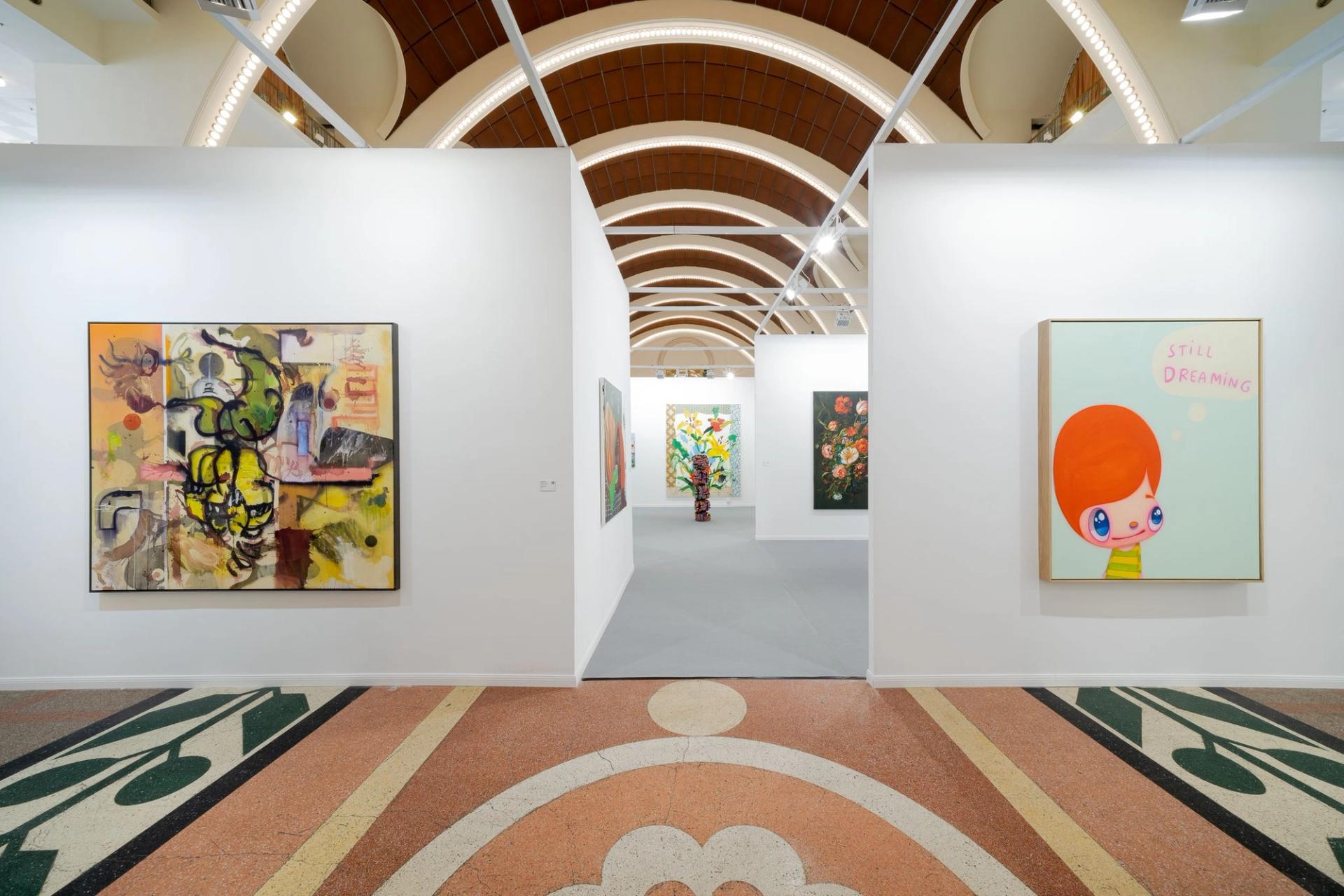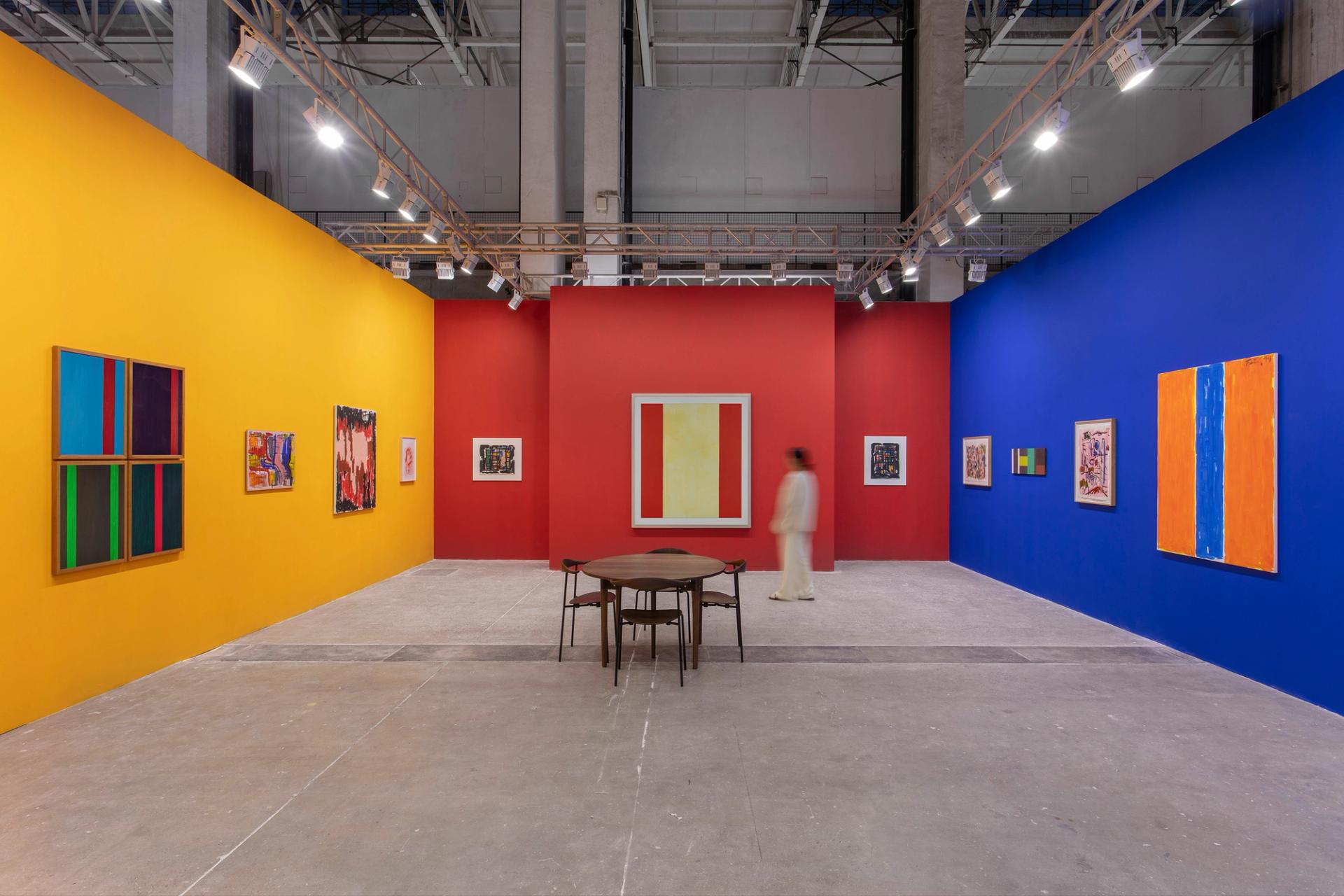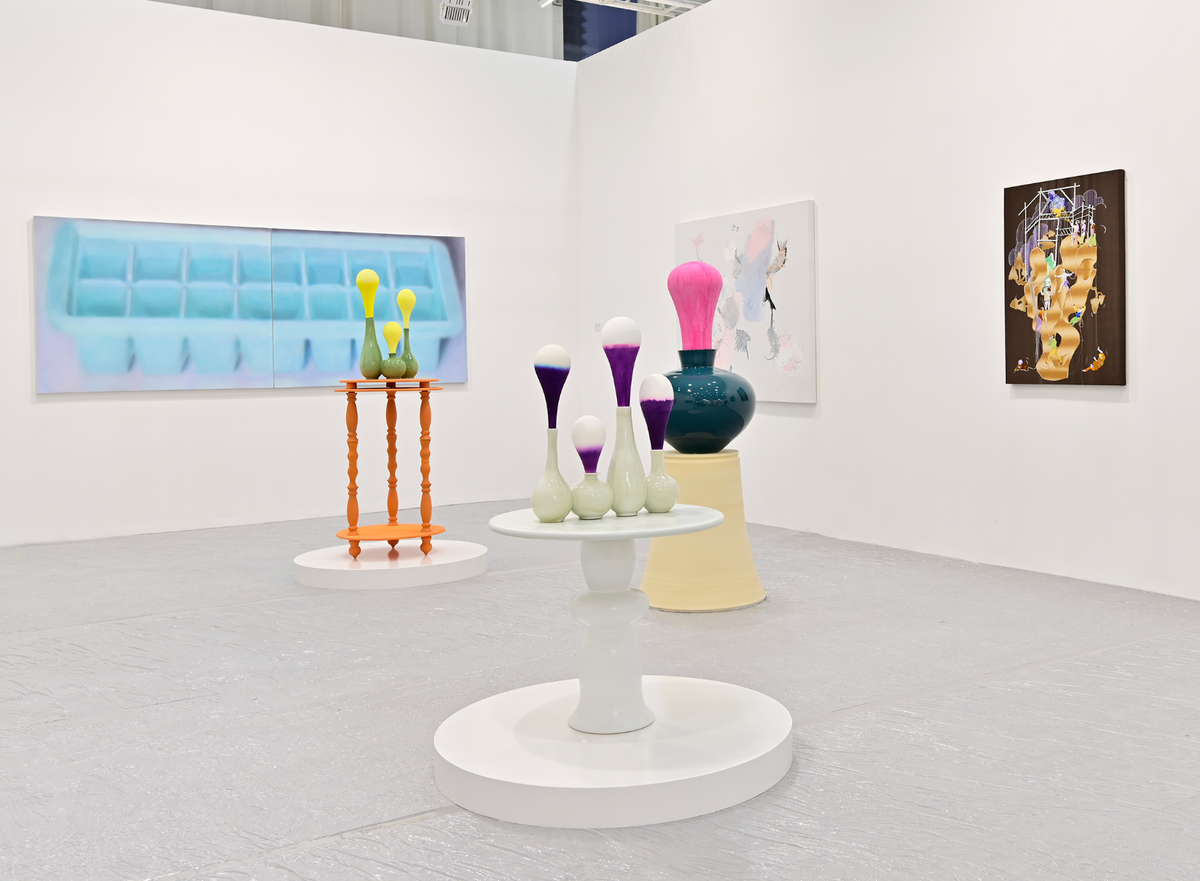Closures, quarantines, and travel restrictions did not completely derail sales at Shanghai’s recent art fairs Art021 and West Bund Art & Design Fair. The events, both scheduled for 10-13 November, were suspended on 11 November and 12 November respectively over health concerns linked to Covid-19.
Tensions were already high in the run up to the fairs, after new rules requiring inbound visitors to Shanghai to submit Covid-19 PCR tests on three consecutive days before entering public events like art fairs threatened to deter out of town collectors. But while it was hardly one of the city’s standout years sales-wise, the moderate success of some galleries dealing to a mostly Shanghai-based collector crowd attests to the affluent city’s enduring commercial cache.
"The number of collectors who came to the fair this time was much less than expected," says Celine Zhuang, owner of Shanghai's Studio gallery, which exhibited this year at West Bund. "The collectors who we met at the booth were mainly from Shanghai, plus a few of them from Wuhan, Shenzhen, and Hangzhou. There were some new faces, and they were very young."
“I think most of collectors were based in Shanghai, a few of them are from other cities,” says Yinting Ting, a supervisor at the Shanghai and Hong Kong gallery Leo, which exhibited at both fairs. “We held a group exhibition of our main artists at Art021. There were some purchases on the opening day, from both new and old clients. Some old clients made appointments with us to see the artworks in the following few days. But unfortunately, Art021 was closed from the second day.” According to Ting, the closures had a direct impact on their sales. “Our booth in West Bund was sealed on the third day of the fair because our staff became 'close contacts' at Art021 and were not allowed to get into West Bund."
A considerable number of gallerists declined to discuss sales this year, only expressing a desire for better conditions in 2023. Many of the 134 galleries and companies exhibiting at Art021 and the 78 galleries and nine institutions and companies at West Bund expressed a desire to return in 2023.

Almine Rech's stand at Art021 Shanghai 2022.
Courtesy of the artists and Almine Rech; Photo: Alessandro Wang
The closured "definitely affected sales", according to Almine Rech Ruiz-Picasso, the founder of Almine Rech, which showed at both fairs. She is one of a number of gallerists who says that they continued to make deals remotely following the fairs' closures.
For Art021, the gallery showed more than 30 works, selling 50% on the first day and a further 20% remotely on the days after. At Westbund, the gallery's solo booth of Brooklyn-based painter Genesis Tramaine sold out on the first day. Rech Ruiz-Picasso notes that most of the collectors who bought works or visited the gallery's booths were based in Shanghai, but also came from other cities, such as "Beijing, Shenzhen, Nanjing, Hangzhou and so on". Nonetheless, there was a decrease in new collectors, especially those from abroad or other cities, compared to years previous, she says.

Gaotai gallery's stand at Art021.
Courtesy of Gaotai gallery
Gaotai Gallery, based in the northwestern city of Urumqi and showing at Art021 for the first time, sold or reserved four works on day one—two paintings by Guzel Zakirova, for $3,600 and $7,000, a photo by Hailun Ma for $4,000 and a sculpture by Hua Wang. These went to collectors from Shanghai, Zhejiang Province and Beijing, half of whom are existing clients. “[We are] doing ok,” said Gaotai's owner Musa Ma Xing on the opening day. "But we expect more sales on the second day, since collectors [typically visit] West Bund on the first day." The only contemporary art gallery in Xinjiang, Goatai represents young artists from or with roots in the region.
Even with truncated days, the fairs provide a nub for exhibitions openings and gallery going that enlivened sales, especially in a lockdown-pocked year that has seen every prior mainland fair cancelled or postponed pre-opening. “Exposure and sales are both important from my view,” Ma says. "We still had an opportunity to meet new collectors at [the fairs], though we are still not doing well enough." He adds that at least a third of his collectors are from Shanghai, with the rest in Xinjiang, Beijing, and other cities around Shanghai and Shenzhen.
White Cube sold around 20 works on the first day of Art021, for a total of over £2m, according to a spokesperson. These include works by Zhou Li, Danh Vo and Tracey Emin’s from a West Bund group show and an Antony Gormley solo booth at 021. Also at 021, Shanghai gallery MadeIn sold 60% to 70% of its booth featuring works by artists including Lu Pingyuan, Xu Zhen and Su Yuxin. It also sold over half of the works at its new gallery show by Wang Jianwei.

Hauser & Wirth's stand at West Bund Art & Design. Courtesy of Hauser & Wirth
At West Bund, Hauser & Wirth sold eight works from its solo presentation of Günther Förg, totalling €1.2m on the opening day, mostly to private collections in mainland China. Across all days it sold 14 works, including a 30-part painting for €525,000 to a private museum in China, amounting to €2.4m.
Also at West Bund, Studio gallery featured two post-1980s Chinese artists —the sculptor Ou Ming and the embroiderer Zhouzhou—both priced between $10,000 and $25,000, says Zhuang. She observed that younger collectors with smaller budgets as well as interior designers represented many of the new clients this year. Zhouzhou’s works skewering China’s selfie culture and the ubiquitous, ominous dabai pandemic workers nearly sold out, and one of Ou’s large sculptures was reserved. “I really believe if we could have had day four, more works might have sold.”
A mixture of hope, desperation and fatigue marks the mood in Shanghai, which is still bruised from gruelling city-wide lockdowns this spring and ongoing smaller outbreaks and quarantines. What few cultural events that have snuck through have been received with a combination of giddiness and trepidation.
"To be honest, I believe this year's fair experience will have a big impact on the domestic art market," and be particularly challenging for local galleries, says Zhuang. "It is obvious that many traditional collectors now lack confidence in the market," due to Covid policies. "Even if they have a budget, they will still choose to wait and see." Still, the public enthusiasm persists: she cites how fair passes, invite-only this year, were being auctioned off on WeChat. "So many people really want to come and see art. I believe that in the future, if the policy can be relaxed and communication with overseas countries can be unblocked, China's art market will still be super energetic."


